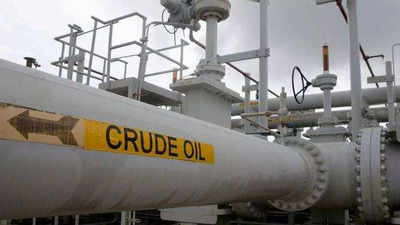
NEW DELHI: The surge in oil prices in the wake of Russia-Ukraine conflict has the potential to upset the government math, which will inhibit its ability to pump-prime economic recovery, and raise the cost of living for people.
Global benchmark Brent crude spiked to $105 a barrel — breaching the $100-mark for the first time since August 14, 2014 — on Thursday as Russian troops entered Ukraine, heightening fears of supply disruption in a market already struggling to meet rising demand.
Oil prices have risen more than $20 a barrel since the start of 2022. The mix of crude bought by India, otherwise known as the ‘Indian Basket’, too has topped $97/barrel and will hit a century in a few days if Brent hovers at the current level.
According to Crisil Research, the conflict will also have a major bearing on global natural gas markets, which will see spot prices go up.
India meets 50% of its gas needs by importing LNG, or liquefied natural gas, in ships. While most of these imports are tied up under term contracts with West Asian and Australian suppliers, higher spot prices will affect additional imports needed to meet rising demand as the economic activities pick up.
An extended period of high energy prices will hurt India’s economic growth since the country meets 83% of its crude requirement through imports.
Every $1 appreciation in Brent price is estimated to add $2 billion to the oil import bill. Investment bankers reckon a 10% rise in oil prices widens India’s current account deficit by 0.4-0.5% of GDP.
The Center doesn’t directly import oil but costlier crude still impacts government math. The current account deficit, or the gap between import and export, widens, which weakens the rupee due to higher demand for dollars.
The subsidy bill and inflation, which has a bearing on interest rates, also rise. All of these end up squeezing the government’s ability to spend on social sector schemes or sops to revive the economy.
Higher subsidy liability on fertilizers and LPG – if the government revives it for general consumers — will tie down funds, which otherwise could be spent on the social sector and infrastructure that drive economic activity.
Fuel prices are certain to go up by Rs 7-8 per liter once the informal government freeze on revisions is lifted once polling gets over on March 7. Higher pump prices will push up costs for transporters and farmers, making everything costlier. This will spark clamor for another round of fuel tax cut.
Industrial consumers will face pressure on profitability with rise in input prices of crude derivatives, besides possible increase in power and fuel costs.
FacebookTwitterLinkedineMail
,